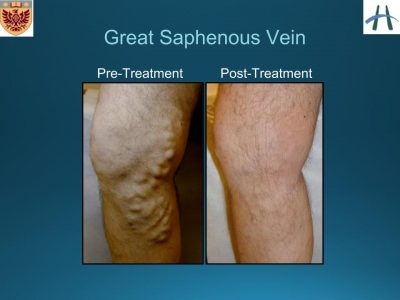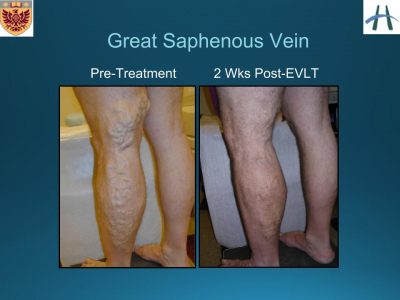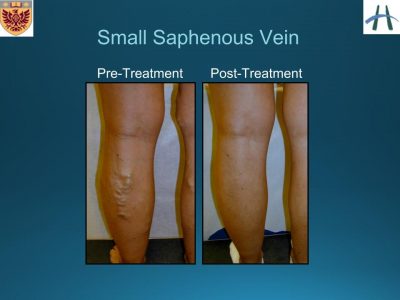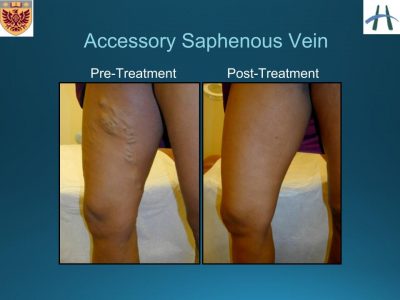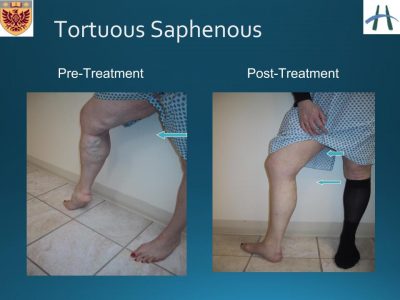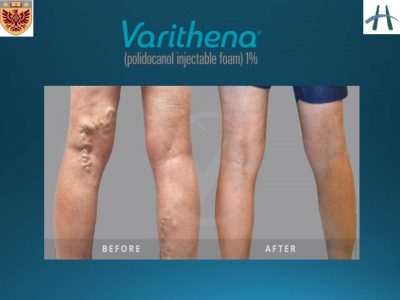Which varicose vein treatment is best?
No single treatment is superior to the others. The best treatment for any individual will often depend on the size, location and number of damaged veins. You must also consider the success, potential risks and costs of treatment. Your physician will discuss these issues with you prior to starting any treatment.
It is very common for an individual to require a combination of treatment options to successfully treat their varicose veins. All treatments apart from conservative measures have risks. Please note that these risks are small and the overall results are generally excellent in the hands of knowledgeable and experienced physicians.
Everyone with venous insufficiency will benefit from lifestyle measures that include regular exercise, 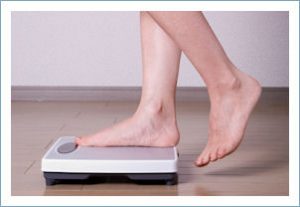 maintaining a healthy weight, periodic rest and elevation of the legs, and wearing graduated compression stockings. All these measures help improve venous return.
maintaining a healthy weight, periodic rest and elevation of the legs, and wearing graduated compression stockings. All these measures help improve venous return.
 Exercise involving the legs will help the calf muscles pump more blood back towards the heart. Exercise also helps with maintaining a healthy weight.
Exercise involving the legs will help the calf muscles pump more blood back towards the heart. Exercise also helps with maintaining a healthy weight.
Weight loss reduces pressure on larger veins in the upper legs and abdomen and allows for easier return of venous blood.
Avoid prolonged periods of standing or sitting with legs dependant if possible and aim to rest and elevate the legs for 15 to 30 minutes three times a day. This reduces blood pooling in the leg due to gravity.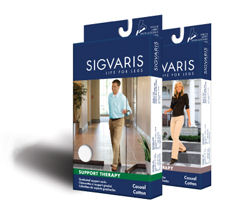
Finally the regular use of properly fitted graduated support stockings will Ahelp venous return when up on your feet for prolonged periods. These stockings provide the greatest compression around the foot and ankle and gradually reduce pressure as they move up the leg. Compression stockings will reduce pooling of blood in the superficial veins and the deep veins of the lower leg.
Medications such as horse chestnut extract can temporarily improve symptoms such as itching , aching or burning discomfort.
Lifestyle measures and medications can improve symptoms and help prevent further problems. However they cannot reverse existing damage and only further treatments (interventions) can remove spider or varicose veins. Learn more by contacting us today.
 very common cause of varicose veins. EVLT works by using laser energy to permanently collapse and seal shut damaged saphenous veins. This procedure is performed in a doctor's office or clinic under local anaesthetic only. A laser fibre is
very common cause of varicose veins. EVLT works by using laser energy to permanently collapse and seal shut damaged saphenous veins. This procedure is performed in a doctor's office or clinic under local anaesthetic only. A laser fibre is 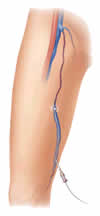 inserted inside the damaged vein and is precisely positioned using ultrasound guidance. A freezing solution is delivered around the entire length of vein to be treated and then the laser fibre is pulled back sealing the vein as it is removed. The whole process takes less than one hour and you may be able to resume normal daily and work activities within 24 to 48 hours. In most cases no surgical incision is necessary. 98% of treatments are successful.
inserted inside the damaged vein and is precisely positioned using ultrasound guidance. A freezing solution is delivered around the entire length of vein to be treated and then the laser fibre is pulled back sealing the vein as it is removed. The whole process takes less than one hour and you may be able to resume normal daily and work activities within 24 to 48 hours. In most cases no surgical incision is necessary. 98% of treatments are successful.
Following EVLT you can expect to recover quickly with only minor discomfort. Post-procedure pain is much less than comparable surgery but you may experience a pulling or aching sensation in the treatment area for a few days. Bruising is common, but usually clears quite quickly (within 1 to 2 weeks).
EVLT treats the main superficial veins. Most of your visible varicose veins may be tributaries (or branches) of these main veins. Therefore following EVLT we allow 6 to 8 weeks for these branches to shrink and in many cases disappear completely. 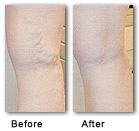 After 8 weeks any remaining branches may be treated with follow up sclerotherapy or ambulatory phlebectomy. The follow-up treatment is expected and is included as part of the EVLT treatment process.
After 8 weeks any remaining branches may be treated with follow up sclerotherapy or ambulatory phlebectomy. The follow-up treatment is expected and is included as part of the EVLT treatment process.
Alternatives of EVLT - include surgical stripping or ligation (tying off the vein) alone.
Advantages of EVLT- can be summarized as - early recovery and less pain, local anaesthetic only, few or no scars, high success rate, low complication rate.
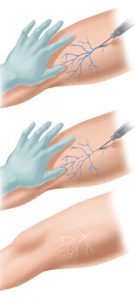 We may suggest sclerotherapy if you request or require treatment of small superficial varicose veins. This may be Conventional Sclerotheraphy by Oakville Vascular - Oakville, Ontario Canadayour only treatment or it may follow removal or ablation of larger varicose veins by alternative techniques.
We may suggest sclerotherapy if you request or require treatment of small superficial varicose veins. This may be Conventional Sclerotheraphy by Oakville Vascular - Oakville, Ontario Canadayour only treatment or it may follow removal or ablation of larger varicose veins by alternative techniques.
Sclerotherapy is performed in the office or clinic without the need for any anaesthetic. The sclerosing agent is injected directly into the vein using a very small needle. There a variety of sclerosants used but all act by causing inflammation and scarring to the inner wall of the vein. After the injection a compression bandage or stocking is applied to cause the vein walls to stick together and prevent blood from flowing into the damaged vein segment. This vein will then eventually scar, "dry up" and disappear.
Following sclerotherapy you can resume normal activities but must wear the compression bandage or stocking for 48 hours. Ideally you should be wearing compression stockings between treatments to prevent new veins from forming. There is a limit to the amount of sclerosing agent that should be given at any one time and typically people who have many clusters to be treated require multiple repeat visits. In addition many areas require repeat injections to get a good result.
Most treatments are successful but up to 10% of individuals may not respond to sclerotherapy - in some cases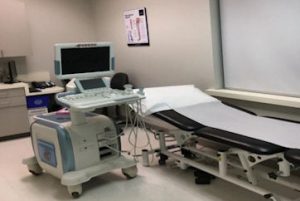 this is due to the fact the veins on the surface are being fed from deeper damaged veins that are not seen. Staining in the area of injection is common but is usually temporary (lasting 2 to 8 weeks), however some people may have permanent staining (2-5%).
this is due to the fact the veins on the surface are being fed from deeper damaged veins that are not seen. Staining in the area of injection is common but is usually temporary (lasting 2 to 8 weeks), however some people may have permanent staining (2-5%).
Alternatives of conventional sclerotherapy - may include external laser (spider veins), or duplex-guided sclerotherapy or ambulatory phlebectomy (superficial branch veins).
Advantages of conventional sclerotherapy - little or no discomfort, no incisions, few complications (safe).
Disadvantages of conventional sclerotherapy - often need repeated sessions, may cause permanent staining, allergic reactions, skin ulcers in a small number of people.
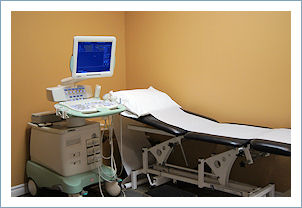 Ultrasound guided sclerotherapy uses agents identical to those used in conventional sclerotherapy but rather than injected as a liquid form, a foam may be used. Using ultrasound, the foam is injected into the veins that often lie hidden beneath the surface. Alternatively it may be used to
Ultrasound guided sclerotherapy uses agents identical to those used in conventional sclerotherapy but rather than injected as a liquid form, a foam may be used. Using ultrasound, the foam is injected into the veins that often lie hidden beneath the surface. Alternatively it may be used to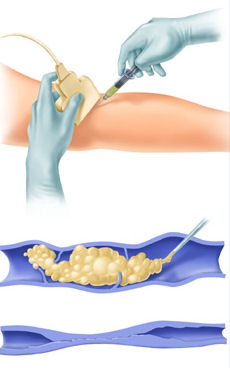 inject larger superficial veins with more control. By using foam the sclerosing agent is less likely to be washed away in larger veins (as liquid would be) and will more likely cause the desired local damage to vein walls. As for conventional sclerotherapy, compression is applied after injection to cause the vein walls to stick together. By injecting the damaged larger or deeper veins, the smaller or more superficial visible veins will either disappear or respond better to conventional sclerotherapy. Ultrasound guided sclerotherapy has been used with considerable reported success in Europe, but is relatively new to North America. This technique requires more experience and skill than conventional sclerotherapy and does have the potential to cause staining, blood clots and allergic reactions. It does offer promise and will likely be a preferred treatment in the future for many people.
inject larger superficial veins with more control. By using foam the sclerosing agent is less likely to be washed away in larger veins (as liquid would be) and will more likely cause the desired local damage to vein walls. As for conventional sclerotherapy, compression is applied after injection to cause the vein walls to stick together. By injecting the damaged larger or deeper veins, the smaller or more superficial visible veins will either disappear or respond better to conventional sclerotherapy. Ultrasound guided sclerotherapy has been used with considerable reported success in Europe, but is relatively new to North America. This technique requires more experience and skill than conventional sclerotherapy and does have the potential to cause staining, blood clots and allergic reactions. It does offer promise and will likely be a preferred treatment in the future for many people.
Following ultrasound guided sclerotherapy you should wear your compression bandage or stocking for 48 hours, but can resume regular activities immediately. Repeated sessions may be necessary to inject veins that remain open or to release trapped blood in damaged veins. Following successful treatment of the deeper veins, further treatment of superficial branches that may remain may be performed with techniques such as conventional sclerotherapy or ambulatory phlebectomy.
Alternatives to ultrasound guided sclerotherapy - is surgical ligation.
Advantages of ultrasound guided sclerotheraphy - no incisions, minimal pain and recovery time, enhances treatment of superficial veins.
Disadvantages of ultrasound guided sclerotheraphy - potential for blood clots, staining, long-term results unknown (relatively new treatment).


VenaSeal® Sapheon Closure System
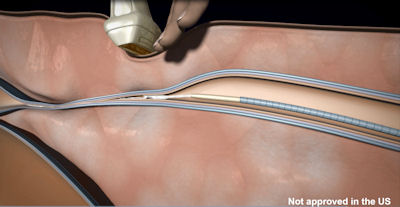
VenaSeal® offers a minimally invasive treatment option that uses an advanced medical adhesive to seal the diseased vein.
The procedure is performed in a doctor’s office or clinic under local anesthetic only. A small catheter is inserted in the diseased vein and small amounts of adhesive are delivered through the catheter until the entire vein segment is sealed.
The entire procedure takes less than one hour.
After the procedure, a small bandage will be placed at the vein access site. Results vary, however most patients are able to return to normal activities immediately after the procedure.
